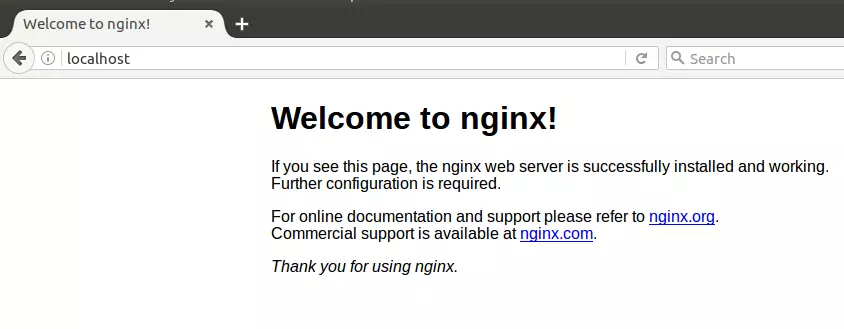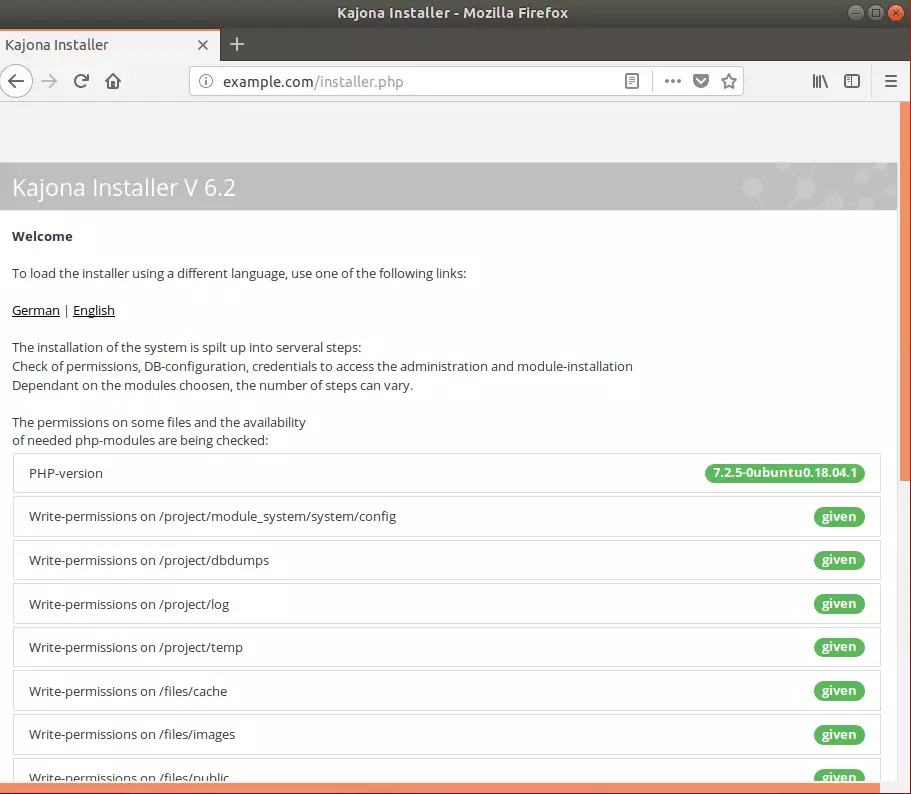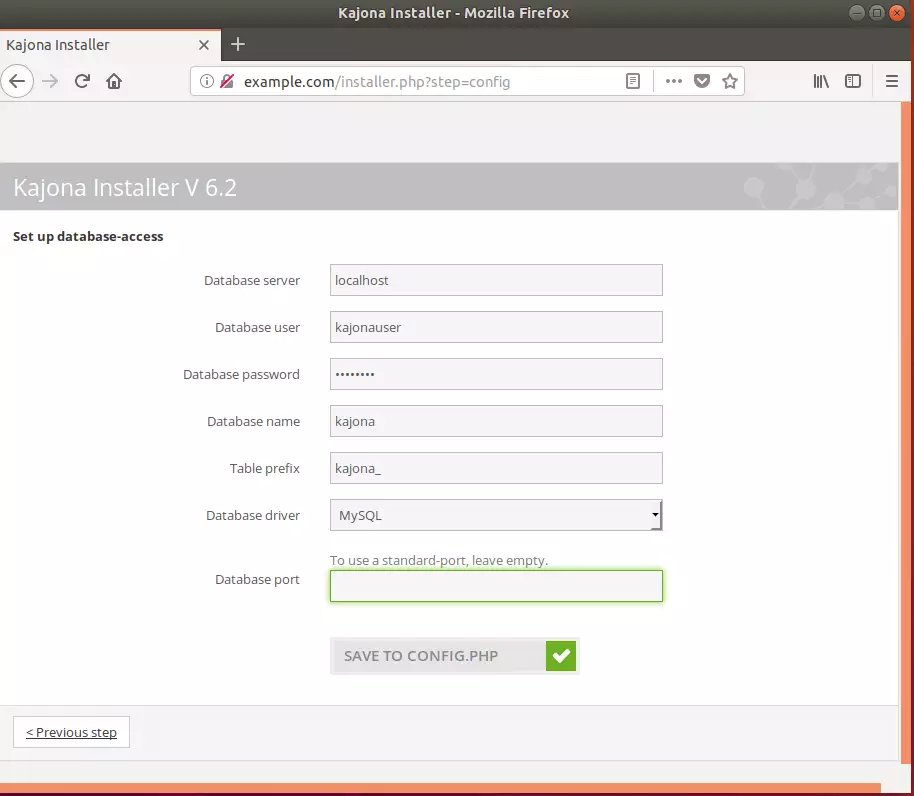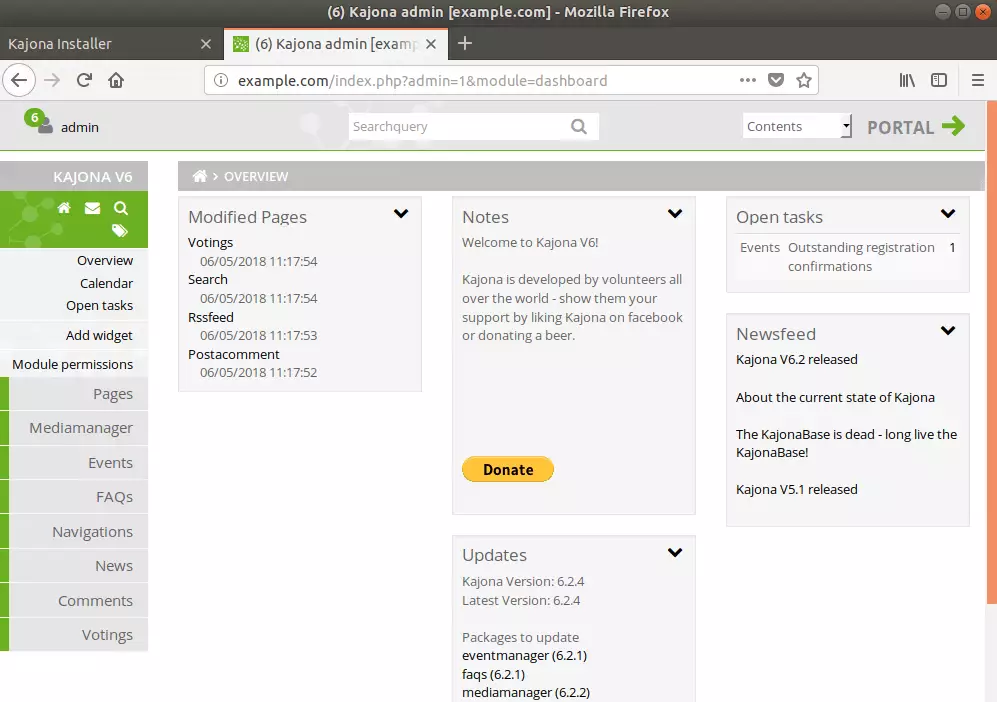This article describes the steps to install Kajona CMS on Ubuntu Linux with Nginx support.
Kaduna is an open-source content management framework that allows anyone to build and maintain websites.
Setting up Kajona CMS with Nginx on Ubuntu Linux allows you to create and manage websites easily. Nginx is a popular HTTP server that provides high performance and scalability for web applications. Kajona CMS is an open-source content management framework that allows users to build and maintain websites for personal or business use.
Installing Kajona CMS on Ubuntu Linux with Nginx support allows you to create a functional platform with various templates and an intuitive admin dashboard to manage your content. Additionally, Ubuntu Linux provides a stable and secure environment in which to run Kajona CMS.
For more on Kajona CMS, please visit its home page
Install Kajona CMS on Ubuntu Linux with Nginx support
As described above, Kajona is an open-source content management framework that allows anyone to build and maintain websites for any purpose.
Below is how to install it on Ubuntu Linux with Nginx support.
Install Nginx HTTP Server on Ubuntu
Nginx HTTP Server is the second most popular web server. Install it since Kajona CMS needs it.
To install Nginx HTTP on the Ubuntu server, run the commands below.
sudo apt update sudo apt install nginx
After installing Nginx, the commands below can be used to stop, start, and enable the Nginx service to always start up with the server boots.
sudo systemctl stop nginx.service sudo systemctl start nginx.service sudo systemctl enable nginx.service
To test the Nginx setup, open your browser and browse to the server hostname or IP address. You should see the Nginx default test page, as shown below. When you see that, then Nginx is working as expected.
http://localhost

Install MariaDB Database Server
MariaDB database server is a great place to start when looking at open-source database servers for Magento. To install MariaDB, run the commands below.
sudo apt-get install mariadb-server mariadb-client
After installing MariaDB, the commands below can stop, start, and enable the service to start when the server boots.
Run these on Ubuntu 16.04 LTS
sudo systemctl stop mysql.service sudo systemctl start mysql.service sudo systemctl enable mysql.service
Run these on Ubuntu 17.10 and 18.04 LTS
sudo systemctl stop mariadb.service sudo systemctl start mariadb.service sudo systemctl enable mariadb.service
After that, run the commands below to secure the MariaDB server by creating a root password and disallowing remote root access.
sudo mysql_secure_installation
When prompted, answer the questions below by following the guide.
- Enter current password for root (enter for none): Just press the Enter
- Set root password? [Y/n]: Y
- New password: Enter password
- Re-enter new password: Repeat password
- Remove anonymous users? [Y/n]: Y
- Disallow root login remotely? [Y/n]: Y
- Remove test database and access to it? [Y/n]: Y
- Reload privilege tables now? [Y/n]: Y
Restart MariaDB server
Type the commands below to log into the MariaDB server to test if MariaDB is installed.
sudo mysql -u root -p
Then, type the password you created above to sign on. If successful, you should see a MariaDB welcome message.

Install PHP 7.2-FPM and Related Modules.
PHP 7.2-FPM may not be available in Ubuntu default repositories. To install it, you will have to get it from third-party repositories.
Run the commands below to add the below third party repository to upgrade to PHP 7.2-FPM
sudo apt-get install software-properties-common sudo add-apt-repository ppa:ondrej/php
Then update and upgrade to PHP 7.2-FPM
sudo apt update
Next, run the commands below to install PHP 7.2 and related modules.
sudo apt install php7.2-fpm php7.2-common php7.2-sqlite3 php7.2-curl php7.2-intl php7.2-mbstring php7.2-xmlrpc php7.2-mysql php7.2-gd php7.2-xml php7.2-cli php7.2-zip
After installing PHP 7.2, run the commands below to open Nginx’s PHP default config file.
sudo nano /etc/php/7.2/fpm/php.ini
Then, save the changes on the following lines below in the file. The value below is an ideal setting to apply in your environment.
file_uploads = On allow_url_fopen = On short_open_tag = On memory_limit = 256M cgi.fix_pathinfo = 0 upload_max_filesize = 100M max_execution_time = 360 date.timezone = America/Chicago
After making the change above, please save the file and close it.
After installing PHP and related modules, you must restart Nginx to reload PHP configurations.
To restart Nginx, run the commands below
sudo systemctl restart nginx.service
Create Kajona Database
Once you’ve installed all the packages required for Kajona CMS to function, continue below to start configuring the servers.
First, run the commands below to create a blank Kajona CMS database.
To log on to the MariaDB database server, run the commands below.
sudo mysql -u root -p
Then, create a database called kajona
CREATE DATABASE kajona;
Create a database user called kajonauser with a new password
CREATE USER 'kajonauser'@'localhost' IDENTIFIED BY 'new_password_here';
Then, grant the user full access to the database.
GRANT ALL ON kajona.* TO 'kajonauser'@'localhost' IDENTIFIED BY 'user_password_here' WITH GRANT OPTION;
Finally, save your changes and exit.
FLUSH PRIVILEGES; EXIT;
Download and Install Kajona CMS
Run the commands below to download Kajona CMS’s latest content. Then, unzip the download file and move the content to the Nginx default root directory.
cd /tmp && wget -O kajona_v6.2_allinone.zip https://www.kajona.de/download.php?systemid=c1cda54593861f48d589 unzip kajona_v6.2_allinone.zip sudo mv kajona /var/www/html/kajona
Next, run the commands below to change the root folder permissions.
sudo chown -R www-data:www-data /var/www/html/kajona/ sudo chmod -R 755 /var/www/html/kajona/
Configure Nginx Kajona CMS Site
Finally, configure the Nginx configuration file for Kajona CMS. This file will control how users access Kajona CMS content. Run the commands below to create a new configuration file called kajona
sudo nano /etc/nginx/sites-available/kajona
Then copy and paste the content below into the file and save it. Replace the highlighted line with your domain name and directory root location.
server {
listen 80;
listen [::]:80;
root /var/www/html/kajona;
index index.php index.html index.htm;
server_name example.com www.example.com;
client_max_body_size 100M;
location / {
try_files $uri $uri/ =404;
}
location ~ \.php$ {
include snippets/fastcgi-php.conf;
fastcgi_pass unix:/var/run/php/php7.2-fpm.sock;
fastcgi_param SCRIPT_FILENAME $document_root$fastcgi_script_name;
}
}
Save the file and exit.
After configuring the VirtualHost above, please enable it by running the commands below.
Enable the Kajona CMS Site
After configuring the VirtualHost above, please enable it by running the commands below, then restart the Nginx server.
sudo ln -s /etc/nginx/sites-available/kajona /etc/nginx/sites-enabled/ sudo systemctl restart nginx.service
Next, open your browser, go to the URL, and continue with the installation.
http://example.com/
You should see the Kajona installation wizard page. Verify all the PHP modules are installed and continue.

Type in the database connection info created above. and continue

Then, create an administrator account.

After entering the info above, click the installation button to install the CMS. When done, run the commands below to remove the installation script.
sudo rm -rf /var/www/html/kajona/installer.php
To login to the admin dashboard, go to the link below
http://example.com/admin

Enjoy!
You may also like the post below:

Leave a Reply